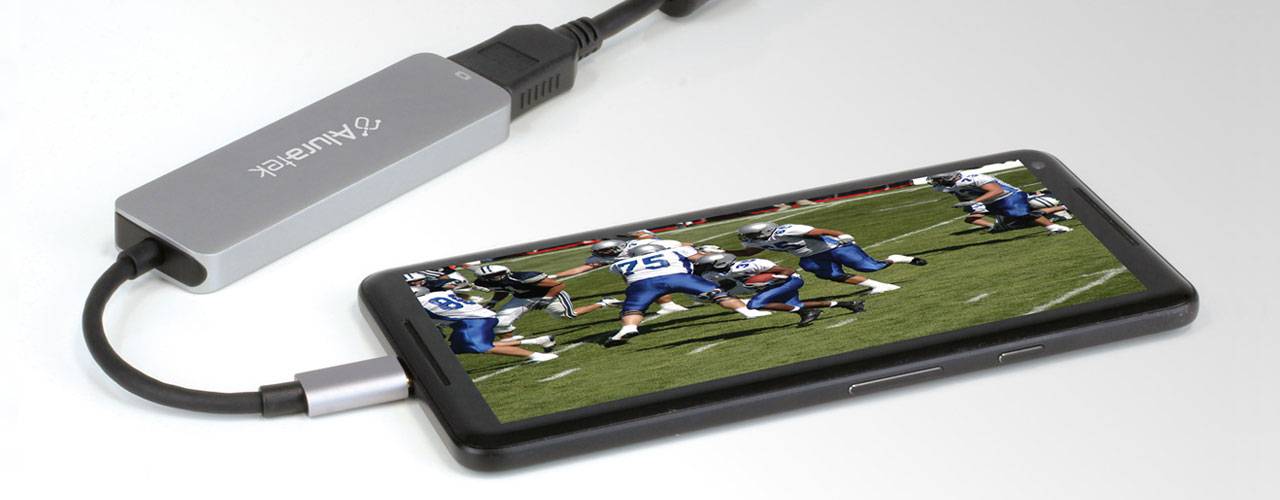
For years, micro USB cords were the standard for just about every device out there. Also known as USB-A cords, they were the go-to for wired charging, video transmission and more. Then, in 2014, USB-C cables were developed, replacing the need for all sizes of USB-A cords. This new technology promised to make charging much faster and even added 4K streaming capabilities through the cord. Still, it has taken some time for the USB-C cable to become commonplace, as device designers had to race to implement the technology and make it more affordable for consumers.
What Is Micro USB?
Micro USB refers to the smaller end of a USB-A cable. It’s the tiniest form of the USB-A standard. This type of port is typically found on older, non-Apple mobile devices. It contains five “pins” and has the same file transfer rate and charging speed as more traditionally-sized USB-A connectors. Originally, each device manufacturer had to create a custom connector at the end of USB-A chargers. Over time, this became too cumbersome and expensive for consumers, ultimately leading to the creation of the micro USB cord. However, since micro USB cords have the same limitations as regularly-sized USB-A cords, a new standard needed to be set for higher-capacity devices.
What Is USB-C?
Coined by researchers in 2014, USB-C refers to the current generation of USB technology. Modeled after the micro USB standard, USB-C cables have a much faster charging rate and are similar in size to micro USBs. Also, they’re not proprietary, meaning that any device manufacturer can use them in their technology, free of charge. USB-C cables are very efficient in the transfer of both power and data. Unlike proprietary competitors, USB-C cords are versatile, so either end can be plugged into a power source and the device. Depending on which generation of USB-C cord it is, there can be a transfer rate of up to either 10 or 20 Gbps.
USB-C Benefits & Features
USB-C is a major revolution in the digital charging industry. From more power, to faster speeds, to compatibility, here are some of the many benefits you’ll instantly realize when you switch from older chargers to USB-C cable chargers.
USB-C Power
Though the cable might be small, it can transfer up to 100 watts of power to a device. This farsurpasses the amount of power that any mainstream device can take, so you can always max out on power delivery with USB-C.
USB-C Speed
The majority of USB-C ports have the potential to deliver data at speeds up to 10Gbps - a huge improvement from previous generations. Comparatively, USB 3.0 and 1st Gen USB 3.1 both deliver at just half that speed, topping out at only 5Gbps.
USB-C Compatibility
USB-C cords are compatible with nearly every modern mobile device, with the exception of those that use proprietary charging technology (Think: Apple Lightning cords). What’s more, USB-C cables are rapidly being adopted by more manufacturers seemingly every day, and they’re highly versatile.
Do I Need USB-C?
Right now, the industry is in a bit of a period of flux, because many device manufacturers have to date been reluctant to fully commit to switching to the superior USB-C technology until it becomes better-known. But now that the data on it is clear, many devices are switching over to the technology. Still, it’s likely, if you’re like most people, you will still have some devices that rely on micro USB technology. It’s fairly safe to assume there will probably be a set of devices continuing to use micro USB technology for at least a few more years. But, USB-C is expected to one day completely take the place of micro USB cords.
Shop Aluratek USB-C
Are you looking for the latest in USB-C technology? We’re proud to be at the intersection of affordability and durability. Browse all of our USB Card Readers and Hubs and Portable Battery Chargers today!





Share:
Connect Wireless Headphones To Vizio
Setting up a Smart Home